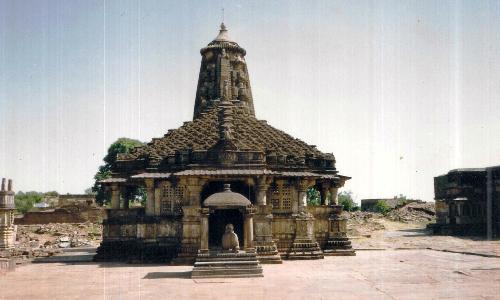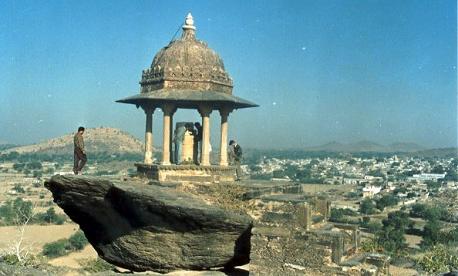
History of bhilwara bhilwara has a quaint story of origin , carefully preserved by the locals. It is said to have come up in the middle of the 11th century when a Bhil tribal, supposedly one of the first settlers, built a Shiva temple on the site of the existing Jataun ka Mandir. This is in the area called Junawas, the oldest part of the town. And if we are to believe this, the town is more than 900 years old. When Arjuna was going to Dwarika with all Gopis during Mahabharata period. He was passing through the present bhilwara region. There was a war of Arjuna & Bhils . Local tradition reveals that it came to be known as bhilwara because it was mostly inhabited by Bhil tribes in old days. These Bhils were eventually driven away towards the hilly tracts and interior places of less importance by the ancestors of the peasant settlers. It is said to have come up in the middle of the 11th century when a Bhil tribal, supposedly one of the first settlers, built a shiva temple on the site of the existing "Bada Mandir". This is in the area called Purana bhilwara, the oldest part of the town. And if we are to believe this, the town is more than 900 years old. Ironically enough, now very few Bhils live in this area. Another version recounts that the present bhilwara city had a mint where coins known as 'BHILADI' were minted and from this denomination was derived the name of the district. A town nearby the city named "Mandal" is assumed to be the base of the Mughals when they attacked Chittor Garh, the moughal forces camped near the "talab" of the town of Mandal, ruins of the camp can still be seen there. A tower served as light house was also built on a small hill in Mandal, know known as "Mandara (minar)" this small hill also houses a devi temple. bhilwara's history can be back to prehistoric period when neolithic culture was flourishing at Bagore village. A pillar said to be of first century BC at Nandsa village is evidence of Vedic rituals and culture. Classical 'Nagar' style of temple architect can be seen at temples of Menaal(Mahanaleshwer),Bijoliya(raj gharana of famous sonal kanawat), Gurlan, Gadarmala, Momi, Kanpura and Mandalgarh places.  Rana Sanga (reigned 1509-27) was a warrior and a man of great chivalry and honor reign was marked by a series of continual battles, in course of which he is said to have lost one arm and had been crippled in one leg and received eighty-four wounds on his body. The last of his battles was again Mughal invader, Babur, in 1527. Deserted by one ofgenerals, Rana Sanga was wounded in the battle and shortly after. But if not, then it's only about 400 years old. And this is according to authentic records. 16th century Rajasthan belonged to the Rajputs. For most of the time these men were building grand forts and fighting amongst themselves or with others for Honour, and at times, for territory. So in keeping with the trend, the Ranas of Mewar (Udaipur), too, were always fighting, especially the Mughals. bhilwara had nothing to do in this power struggle, except for the fact that it lay on the Mewar-Delhi route. On the occasion of every invasion and Mewar's resistance to it, the villages and towns here would be plundered. As a result the plains of bhilwara lay periodically deserted. But good times were ahead the 17th and 18th centuries were more or less peaceful. A treaty had been signed between Mewar's Amar Singh and Delhi's Jahangir in 1615. But Amar Singh was so upset with himself for having shaken hands with the Mughals that he gave up his title in favour of his son Maharana Karan Singh. The poor Rajput even left Udaipur and never came back. Unfortunately, bhilwara's wellbeing was cut short again. This time by the Marathas who plundered the town about 10-12 times in the beginning of the 19th century. The wealth and prosperity that had been accumulated in the past two centuries of peaceful construction was completely lost. So much so that James Tod, the British Political Agent and historian, records that the 6,000 families of 1806 were reduced to zero in 1818, and the place was turned into a ghost city. |

